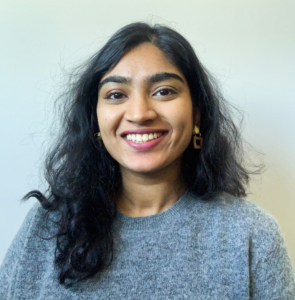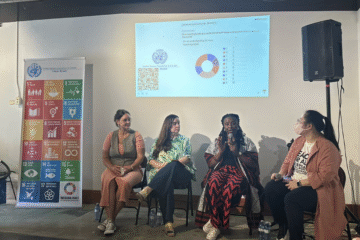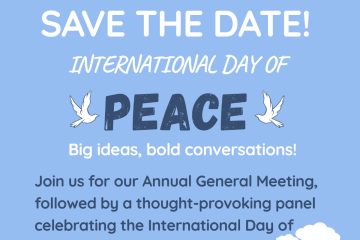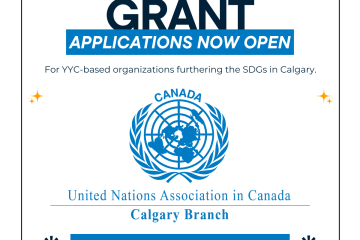Understanding Racism in International Development
Recently, members of UNAC-Calgary had the privilege of attending a 6-session design lab on Anti-Racism in International Development hosted by Alberta Council for Global Cooperation (ACGC).
Aimed at members of the international development sector in Alberta, this series of participatory training sessions focused on using human-centered design to develop and strengthen anti-racist skill sets within the international development sector.
 Sree Nair, UNAC-Calgary volunteer
Sree Nair, UNAC-Calgary volunteer
The Anti-Racism in International Development: A Human Centered Design Approach, presented by Alberta Council for Global Cooperation was a tremendous learning opportunity for me.
Realizing that systemic racism exists everywhere, I hoped that this experience would provide me with the necessary skill and knowledge background in how to address racial bias in organizations I currently work in, and to redress the international interventions that have constantly denied people from historically disadvantaged countries their right to self-determination. I had hoped to learn more about putting the client at the centre of capacity building in the international development sector and to use a holistic approach that encourages collaboration.
I learned, unlearned and explored concepts related to race and race, privilege, power and intersectionality in the international development sector and how to actively incorporate an anti-racist, anti-oppressive lens to the work.
The space provided by the facilitators aided in allowing participants such as myself to network, share experiences, connect and exchange the multitude of experiential knowledge to build a collective impact.
One thing that surprised me was in understanding the application of an intersectional lens ‒ I hadn’t considered some of the various factors that contribute to an outcome such as power relations intersecting with systematic factors which may also intersect with other social variables).
My biggest takeaway will be in the application of new theories and tools of human centered design that I will use as I find them relevant to the broader work in international development.
I have learned the different ways of Human Centered Design- beginning with empathy , defining the problem – understanding the issue and needs and insights, Ideating and brainstorming from other fields and building with others, deciding and prototyping ideas (program service, policy innovation) as means to alleviate those needs and lastly testing the prototype with the community I serve.
I am thankful to the facilitators of the sessions in providing a safe, respectful and learning space for me to recognize, reflect and act on development through a holistic human centered approach to build capacity.
I not only learned how to commit myself to use inclusive language, build capacity and uphold values of equality, dignity and inclusion and advocate for agencies of people who have been historically discriminated against, but also on how to take a collective approach by bringing organizations and different perspectives together while addressing the needs of the human in the centre.
Wanda Rumball, UNAC-Calgary Board Member
I was unsure of what to expect from the Program when I applied to attend. I speculated that it might highlight rampant and systematic racism within the international development community, with concrete examples and conclusions gleaned from research and study. I wondered also if it would attempt to equip us with tools to improve our own organizations.
This was not the focus of the Program.
Instead, the Program provided amazing training on fundamental subjects to establish shared consistent vocabulary and understanding. We learned to identify different types of racism and their roots and explored, in depth, the concepts of equality, equity, power and privilege as well as methods to implement behavioural change.
In one instance, an incredible case study was presented that demonstrated the successful implementation of a social innovation process to implement real, substantive change in a local community. It was powerful to see the process and its results.
The balance of the Program sought to introduce and foster our understanding of the human-centred design process. Working in groups we were able to experience the various parts of the process first-hand and appreciate the iterative and continuous nature of human centred design.
I thoroughly appreciated the diversity both in experience and background of the Program’s leaders and participants. That diversity, in my view, made the Program a resounding success in fostering rich discussion and perspective and made the experience personally very rewarding.
As with all great learning experiences, the Program inspires me to view established norms, institutions, programs and processes through a new lens and reflect not only on their history but also on their present with a view to identifying institutional and structural racism. I feel that the Program has instilled hope (and perspective with respect to the possible solutions) to address identified inequity.
To learn more about the Program hosted by Alberta Council for Global Cooperation (ACGC), visit https://www.youneedthisbox.ca/


